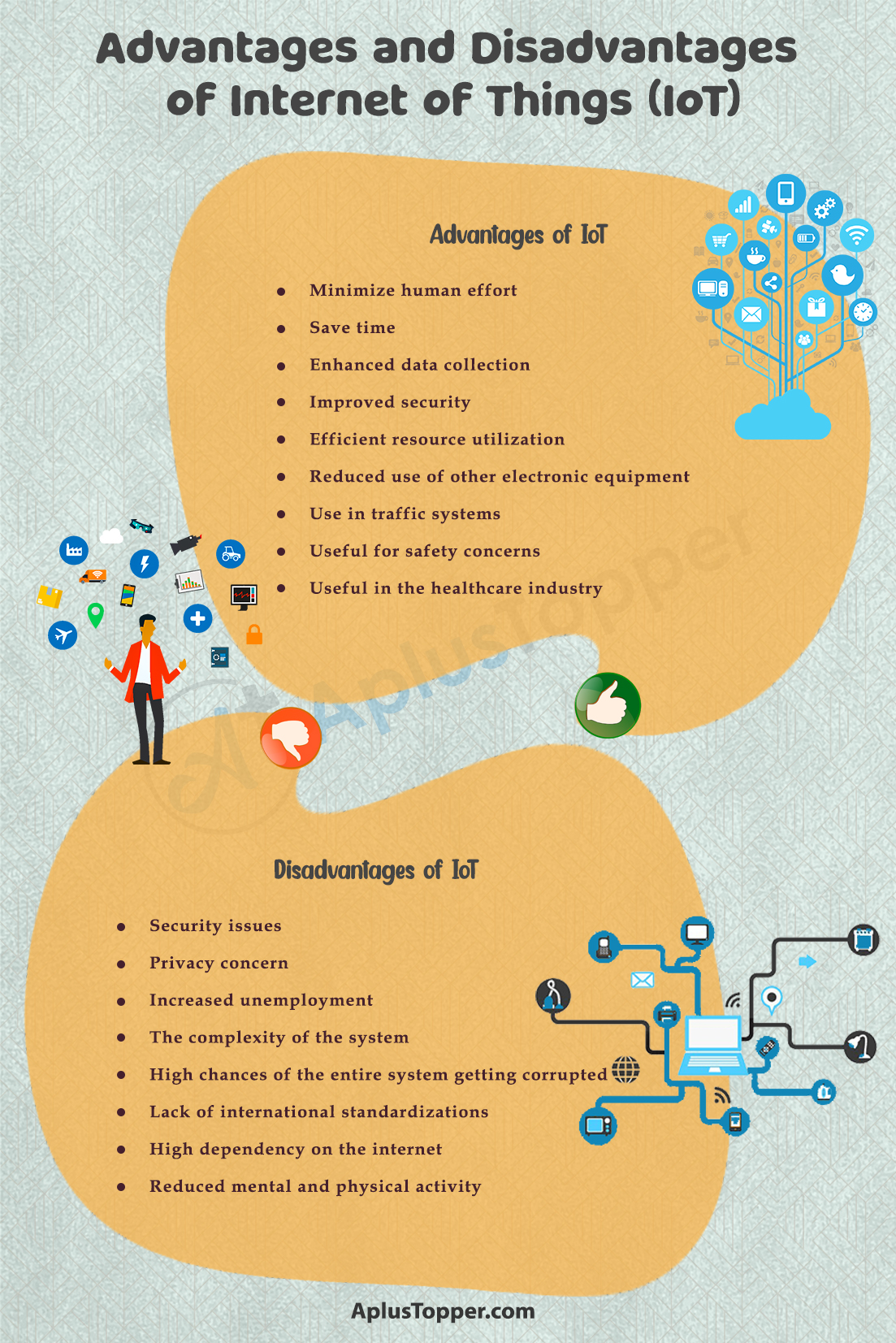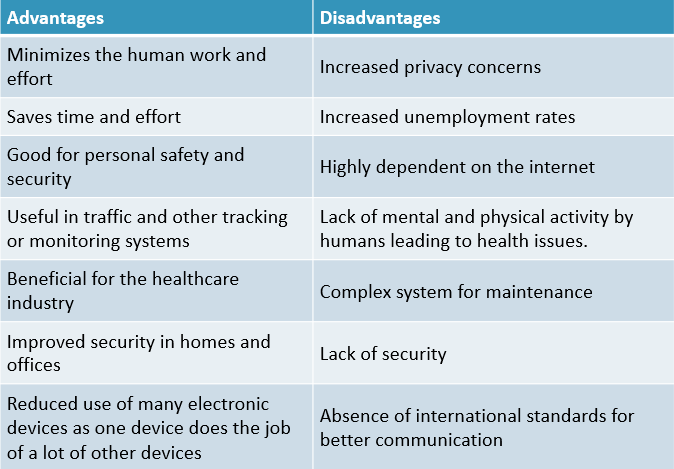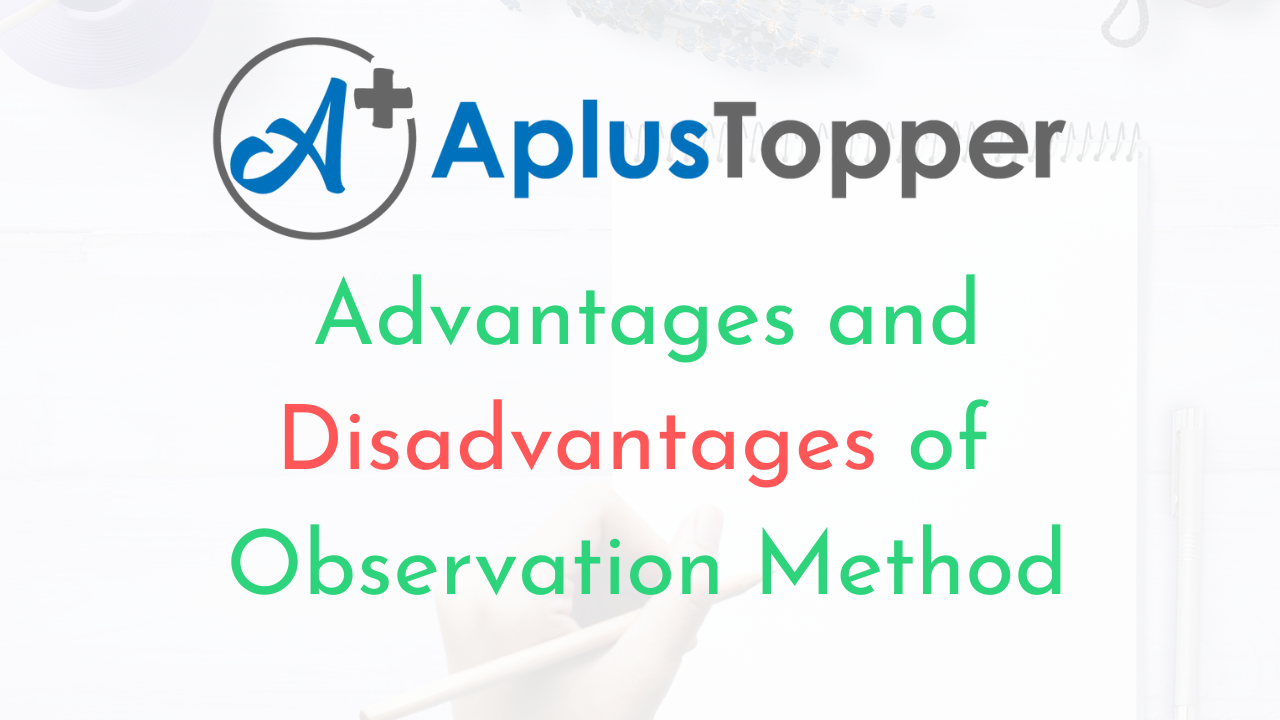Advantages and Disadvantages of IoT: The internet of things, also called the IoT, is a system of interrelated computing devices, digital and mechanical machines, objects, animals, or people provided with unique identifiers (UIDs) and the ability to transfer data over a network without requiring human-to-human or human-to-computer interaction. Any natural or artificial object can be assigned an Internet Protocol (IP) address and transfer data over a network.
Recently, organizations in various industries are using IoT to operate more efficiently, better understand the customers, deliver enhanced customer service, improve decision-making, and increase the value of the business.
Students can also find more Advantages and Disadvantages articles on events, persons, sports, technology, and many more.
What is IoT? Advantages and Disadvantages of IoT 2022
The Internet of Things involves the numerous physical devices worldwide connected to the internet, collecting and sharing data. Due to the production of super-cheap computer chips and the availability of wireless networks, it’s possible to turn any object or thing into a part of the IoT. If we connect up all these different objects and add sensors to them, it then adds a level of digital intelligence to the devices that would otherwise be dumb, enabling them to communicate with real-time data without involving a human being. The Internet of Things makes the world around us more competent and responsive, merging the digital and physical universes.
An IoT ecosystem comprises web-enabled smart devices that use embedded systems, like processors, sensors, and communication hardware, to collect, send, and act on the data that they acquire from their environments. These devices share the sensor data they collect by connecting to an IoT gateway or other edge device. The data is further transferred to the cloud to be analysed or analysed locally. Often, these devices communicate with other related devices and act on the information they get from one another. The devices do most of the work without human intervention, although people can interact with them, such as setting them up, giving them instructions, or accessing the data.
- Advantages of IoT
- Disadvantages of IoT
- Comparison Table for Advantages & Disadvantages of IoT
- FAQs on Pros & Cons of IoT
Advantages of IoT
Internet of things facilitates several advantages in our daily lives. Some of its advantages are given below:
- Minimize human effort: As IoT devices interact and communicate with each other, they can automate the tasks helping to improve the quality of a business’s services and reducing the need for human intervention.
- Save time: By reducing the human effort, it saves a lot of our time. Saving time is one of the primary advantages of using the IoT platform.
- Enhanced data collection: Information is easily accessible, even if we are far away from our actual location, and it is updated frequently in real-time. Hence these devices can access information from anywhere at any time on any device.
- Improved security: If we have an interconnected system, it can assist in the smarter control of homes and cities through mobile phones. It enhances security and offers personal protection.
- Efficient resource utilization:We can increase resource utilization and monitor natural resources by knowing the functionality and how each device works.
- Reduced use of other electronic equipment: Electric devices are directly connected and can communicate with a controller computer, such as a mobile phone, resulting in efficient electricity use. Hence, there will be no unnecessary use of electrical equipment.
- Use in traffic systems: Asset tracking, delivery, surveillance, traffic or transportation tracking, inventory control, individual order tracking, and customer management can be more cost-effective with the right tracking system using IoT technology.
- Useful for safety concerns: It is helpful for safety because it senses any potential danger and warns users. For example, GM OnStar is an integrated device that identifies a car crash or accident on the road. It immediately makes a call if an accident or crash is found.
- Useful in the healthcare industry: Patient care can be performed more effectively in real-time without needing a doctor’s visit. It gives them the ability to make choices as well as provide evidence-based care.
Disadvantages of IoT
As the Internet of things facilitates advantages, it also creates a significant set of drawbacks. Some of the IoT disadvantages are given below:
- Security issues: IoT systems are interconnected and communicate over networks. So, the system offers little control despite any security measures, and it can lead to various kinds of network attacks.
- Privacy concern: The IoT system provides critical personal data in full detail without the user’s active participation.
- Increased unemployment: Unskilled workers or even the skilled ones are at a high risk of losing their jobs, leading to high unemployment rates. Smart surveillance cameras, robots, smart ironing systems, smart washing machines, and other facilities are replacing the humans who would earlier do these works.
- The complexity of the system: The designing, developing, maintaining, and enabling the extensive technology to IoT system is quite complicated.
- High chances of the entire system getting corrupted: If there is a bug in the system, it is possible that every connected device will become corrupted.
- Lack of international standardizations: As there is no international standard of compatibility for IoT, it is problematic for devices from different manufacturers to communicate with each other.
- High dependency on the internet: They rely heavily on the internet and cannot function effectively without it.
- Reduced mental and physical activity: Overuse of the internet and technology makes people ignorant because they rely on smart devices instead of doing physical work, causing them to become lethargic and inactive.

Comparison Table for Advantages & Disadvantages of IoT
| Advantages | Disadvantages |
| Minimizes the human work and effort | Increased privacy concerns |
| Saves time and effort | Increased unemployment rates |
| Good for personal safety and security | Highly dependent on the internet |
| Useful in traffic and other tracking or monitoring systems | Lack of mental and physical activity by humans leading to health issues. |
| Beneficial for the healthcare industry | Complex system for maintenance |
| Improved security in homes and offices | Lack of security |
| Reduced use of many electronic devices as one device does the job of a lot of other devices | Absence of international standards for better communication |

As the abundance of connected devices continues to rise, our living and working environments will become filled with smart products – assuming we are ready to accept the security and privacy trade-offs. Some will welcome the new era of smart things, while others will pine for the days when a chair was simply a chair. Hence, this article lists all the advantages and disadvantages of IoT to help us make the right choice for our future.
FAQ’s on Pros & Cons of IoT
Question 1.
What are the applications of IoT?
Answer:
IoT applications are used on IoT devices and can be created in almost every industry, including healthcare, industrial automation, smart homes and buildings, automotive, and wearable technology. Simultaneously, IoT applications are using AI and machine learning to add intelligence to devices.
Question 2.
What are the examples of IoT devices?
Answer:
A lot of devices that we use in our daily lives are IoT devices such as – smart mobiles, smartwatches, smart refrigerators, smart fire alarms, smart door locks, smart bicycles, medical sensors, fitness trackers, smart security systems, etc.
Question 3.
What are the different components of IoT?
Answer:
An IoT system comprises the following components:
- Device
- Resource
- Controller Service
- Database
- Web service
- Analysis Component and Application.
